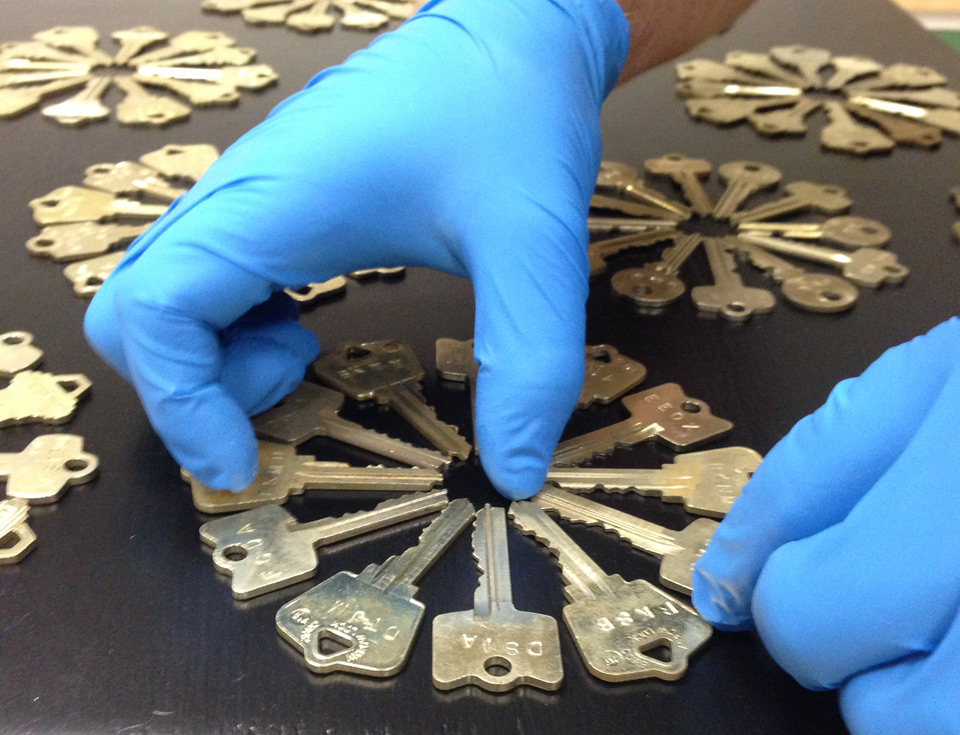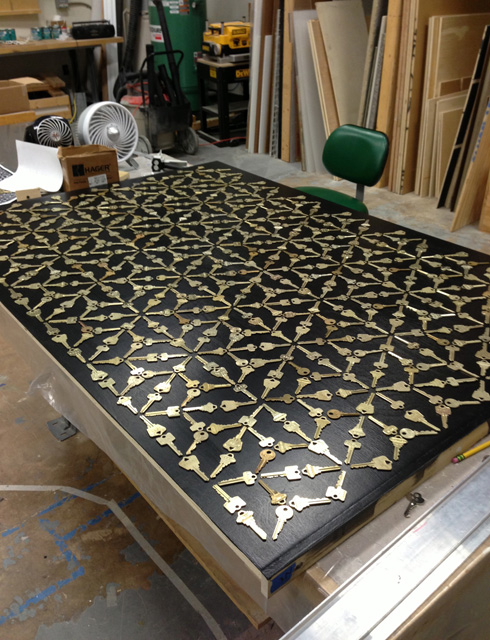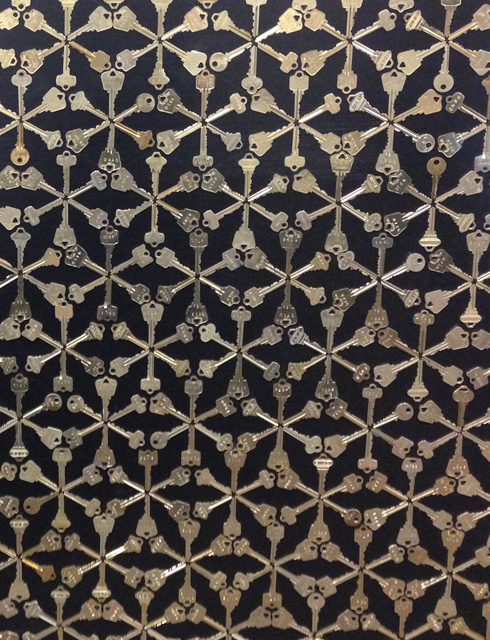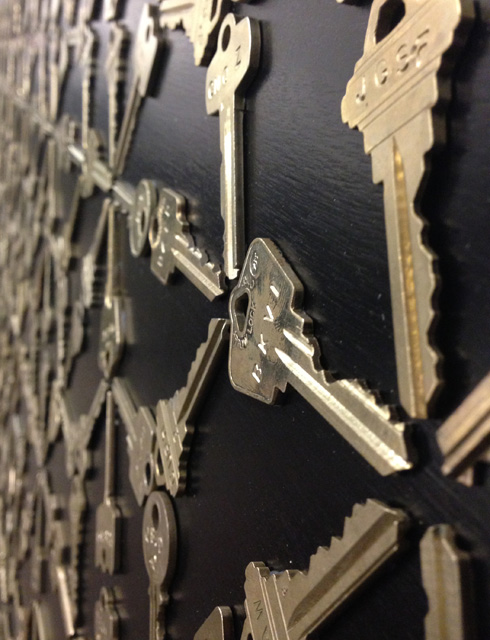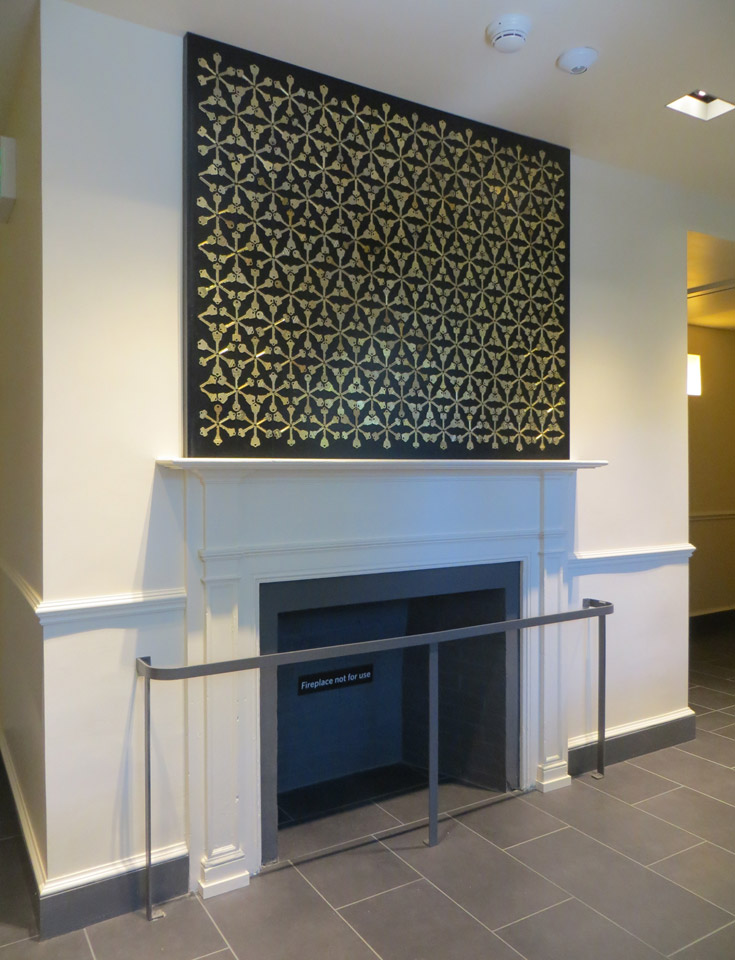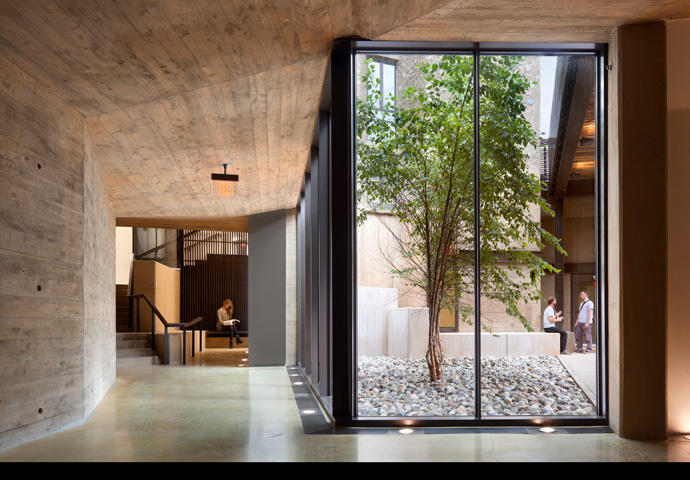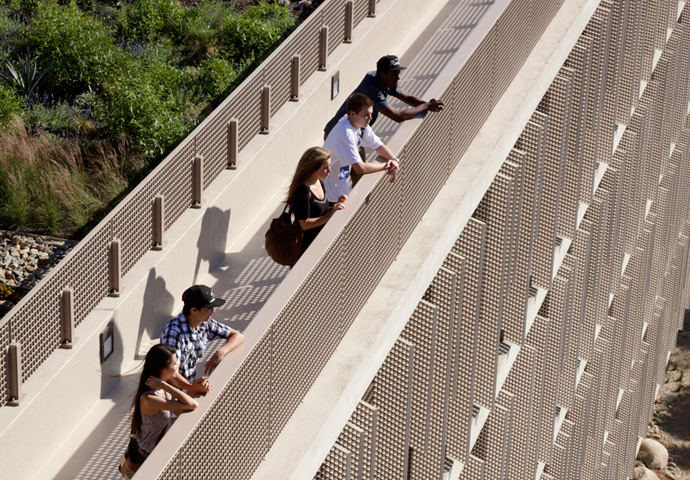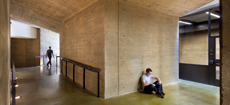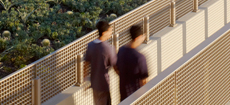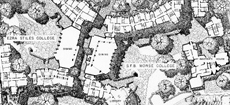Watch: Artwork for Harvard House Reflects History
More than 6100 keys were glued to stained wood backing to create the eight panels placed throughout Stone Hall.
Harvard University's residential housing system includes twelve residential houses, each endowed with its own character and culture that provide undergraduate students with a smaller community within the university as a whole. Following their freshman year in one of the dormitories in Harvard Yard, students transfer to a residential house, where they remain for the rest of their college careers. As part of a larger House Renewal project at Harvard, we recently completed a full renovation of Stone Hall (formerly Old Quincy Hall), a project which improved the living spaces within the building and added social spaces and a smart classroom in the previously underutilized basement.
The building is five stories, each of which includes two historic fireplaces—used for heating in the past but now decorative. Early in the design process, a desire emerged for a graphic treatment representing the history of the house to be placed above the mantles of these eight fireplaces. Through a brainstorming process involving members of both Harvard University and KieranTimberlake, we developed the idea to create sculptural wall panels using thousands of old room keys used by former residents.
In total, 6136 room keys were used in the patterns. To allow light to reflect off each key, creating a twinkling effect under certain lighting conditions, the panels were left uncovered by protective glass. Once complete, we transported them to Cambridge for installation.
A completed panel installed above the mantel in Stone Hall.
A modern interpretation of Stone Hall's history, the panels that now appear over the historic fireplaces provide an artistic link to the past and the thousands of students who have carried keys to the house during its first 80 years.



